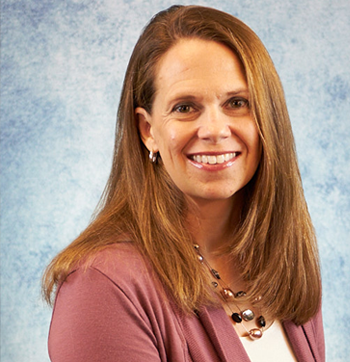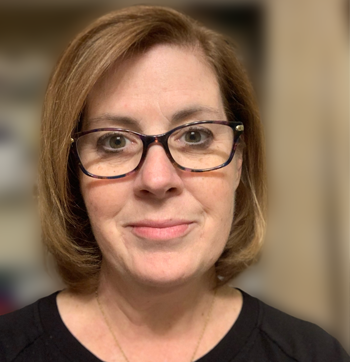5 Inspiring STEM Women Who are Making Medicine Happen

Numbers don’t lie, so the saying goes. And in the United States, statistics about women in science, technology, engineering, and mathematics (STEM) seem to speak less than impressive volumes of truth.
Here are the facts:
In 2021, only 24% of people working in the United States held jobs in a STEM field1. And while women made up 50.5% of the total U.S. population2, they accounted for only 35% of people employed in STEM jobs.1 Moreover, out of the 24% of all people who worked in STEM1, 65% of them were white.1 Meanwhile, non-Hispanic, non-Latino white people accounted for 59.3% of people in the U.S.2 This shows a slight lack of parity for marginalized communities.
Still, numbers—in all their objective certainty—rarely tell the whole story. Every day, amazing women in STEM make a difference in the world through the work they do and the examples they set.
Here are five women at Pfizer who are defying the odds.
Meet Magdia De Jesus

From a very young age, I wanted to be a scientist,” says Magdia De Jesus, Director, Scientific Strategy and Portfolio Lead, Worldwide Medical and Safety at Pfizer. “I was in 9th grade when I first walked into a research laboratory,” she says. “It felt like home. I knew instantly that it was exactly what I wanted to do.”
That passion really comes down to a moment. “Every time I made a small discovery in the lab, briefly, for those first few minutes, it felt like I was the only one in the world that knew the answer to a question.”
Now, working with research units and external partners, she develops strategies that engage and support the scientific work of Pfizer’s Worldwide Research, Development, and Medical group.
Before Pfizer, Magdia had overcome some gender-based challenges. She felt pressure to constantly demonstrate her credibility. She found that “the door would not open” for opportunities she wanted to pursue. And she endured “conditional inclusivity” that made her feel she could not bring her whole, authentic self.
But the advice she has for anyone drawn to STEM is advice she truly lives by. “We never fall backward, we fall forward,” she says. “Let your dream of becoming a leader in STEM be your north star.”
This advice has guided her as she has continued to work hard, kept knocking on those closed doors, and sought support systems, including mentors.
“I am a product of pipeline mentorship,” Magdia says. “I’m grateful for my mentors and sponsors who are so willing to continue to foster my career growth.”
Two people stand out to Magdia as being inspiring: her former program mentor, Dr. Terry Ann Krulwich, and her manager at Pfizer, Dr. Aida Habtezion.
Meet Aida Habtezion

Growing up in Eastern Africa, Dr. Aida Habtezion came from a family that deeply valued education. “They described it as the ‘greatest wealth and inheritance,’” she explains. “It stays with us. No one can take it away.”
In grade school, Aida leaned toward math and science. “Science provided me with endless challenges of solving problems and finding solutions,” she recalls. By college, her interests spanned three STEM fields: science, engineering, and math. Initially, however, a medical career seemed unlikely.
“I feared the sight of blood,” she recalls, “I also found it difficult to see anyone in pain.” By graduate school, her perspective shifted. “I started to see science and its application as a solution to what I feared most.”
Following medical school, she began postgraduate training, pursuing a dual career in science and medicine. Now, as Pfizer’s SVP, Chief Medical Officer, Head of Worldwide Medical and Safety, she’s a true paragon. But for much of her career as a physician-scientist, women mentors and role models with her background were scarce.
“I didn’t come into contact with many senior women, but this is the reality for many women in STEM,” she says, pointing to the importance of male allyship and men-to-women mentorship, in addition to female mentorship. Recognizing the influence of those outside one’s field also matters.
“While I deeply admire several women who have made brilliant scientific discoveries and advanced patient care, the women in my family, especially my mother, truly inspired me,” she says. Her patients have profoundly impacted her, too. “They’re a source of inspiration even if they aren’t in STEM,” she says.
And for those she inspires, she advises: “Don’t be afraid to ask questions and explore opportunities. Invest the time in finding good mentors. Know it’s a two-way street. And build your network early.”
Meet Michelle Casey

As the Vice President, Head of Oncology and Rare Disease Statistics at Pfizer, Michelle Casey leads a team of statisticians who support drug development. And to think, it all started for Michelle with a simple love of math.
“Math always came easy for me, so becoming a math major was a natural fit,” she say. The next step wasn’t as clear. She had no plan for how she would apply that degree once she graduated.
After her third year, she attended a summer program for women in math, where she got to meet with different employers, including government agencies. They were drawn to her analytic skills. She was looking for a calling. “What appealed to me most was being able to apply my skills to a field where I could feel like I was truly impacting people’s lives,” she recalls.
And the clincher was meeting one special professor of biostatistics. “She was doing cancer research that really sparked my interest in statistics and how it's applied to medical research."
And for the future math fan, her advice reflects her own journey. “Find a STEM field that you are passionate about,” she suggests. “Build a network of peers and mentors and sponsors.” Likewise, she adds, remember to give back by becoming a mentor or sponsor of others who are up-and-coming in your field.
Meet Becky Hintze

Growing up, I was told I could do anything I set my mind to,” Becky Hintze says. “So, I honestly didn't think twice about working in STEM. I was good at it. I enjoyed it. So, it made sense that I’d find a career in it.”
But after she earned a math/statistics degree, she wasn’t sure what was next. Then a family friend introduced her to a statistician at Hoffman LaRoche. They talked about biostatistics as well as the pharmaceutical industry. After that, she enrolled in a master's program for Medical Statistics and became Roche's first statistics intern.
That was in 1993. Since 1994, Becky has worked at Pfizer. As Executive Director, Oncology & Rare Diseases Lead in Statistical Data Sciences, her team analyzes clinical trial data, submitting that data to health agencies to get medicines approved for use.
“Early in my career, I was shy in meetings,” she says. “I was a bit intimidated, especially by more senior male team members.” Her manager encouraged her to speak up. Now a leader herself, she’s sensitive to how communication and management styles impact others. “It makes me more nurturing,” she says. “I want everyone to feel supported and able to speak up.”
In turn, she finds inspiration all around her. “Whether they’re senior leaders, like my manager, Patti Compton, or entry-level colleagues just joining the industry, I’m inspired by women that are self-driven, take advantage of the opportunities in front of them, and let their skills and expertise speak for themselves.”
“We’re at an incredible time in history; there’s truly nothing a woman cannot do,” she says. “Keep learning and connecting with people. Build relationships and follow your passions.”
Meet Patti Compton

As the Vice President, Head of Statistical Data Sciences and Analytics at Pfizer, Patti Compton leads the group that produces analysis for Pfizer’s clinical trials. Her team submits reports to regulatory bodies and provides information to patients to safely take prescribed medicines. For Patti, it’s all about the data, and the empowerment it brings.
“I get to consider how we can share data to inform and enable decision-making,” she says. “I'm eager for the day that we share our clinical trial data back to the participants for their own medical history.”
Also, working in STEM satisfies her penchant for solving problems. “STEM allows me to apply strategic and tactical thinking to real-world problems,” she says.
Those skills helped when, early in her career, she encountered pay inequity, as women have faced throughout history.
“I recognized that I hadn’t negotiated my salary as well as some of my peers,” she remembers. The difference was huge; others were making 10 times more. After that, she’s been sure to carefully examine salary requirements for new jobs.
Patti celebrates Pfizer’s women’s resource group PWR for helping women avoid those kinds of pitfalls. “They enable women to talk about advocacy and career development programs, encouraging them to seek higher-level positions.”
She finds inspiration in other women’s work, following STEM icons Cynthia Breazeal (a robotics trailblazer) and Parisa Tabriz (the self-titled “Security Princess” at Google). Her Pfizer colleagues also energize her. “I have most recently been inspired by the group of women I worked with on the COVID-19 vaccine clinical trials,” she says. “I’ve witnessed some extraordinary innovation and delivery.”
“It is a glorious time to be in STEM,” she says, addressing those who may seek inspiration of their own. “So, stick with it, because you will get to be a part of some great progress.”
Meet the Future Woman in STEM
She’s curious. She's enthusiastic. She’s creative. She may also show an interest in subjects you're not so confident about. Don't panic. A child doesn’t have to come from a STEM family to have a future in this field.
For parents, Magdia offers this advice:
“Don’t let lack of knowledge about STEM deter your guidance. There are now many online resources that you can connect to,” she says. “This is important. Even if the opportunity begins virtually, these girls get to peek into STEM professions. They get to connect with peers who are also interested. And they get to meet the role models of the profession.”
It's a simple fact: representation matters. So, these women in STEM may help girls to recognize their own potential. And those girls may do the same for the next girls. It may take some time, but one day the odds will be in women’s favor.
References
1. National Center for Science and Engineering Statistics (NCSES). 2023. Diversity and STEM: Women, Minorities, and Persons with Disabilities 2023. Special Report NSF 23-315. Alexandria, VA: National Science Foundation. https://ncses.nsf.gov/wmpd. Accessed February 5, 2023.
2. United States Census Bureau. Quick Facts. https://www.census.gov/quickfacts/fact/table/US/SEX255221#SEX255221. Accessed February 5, 2023.
![]()
